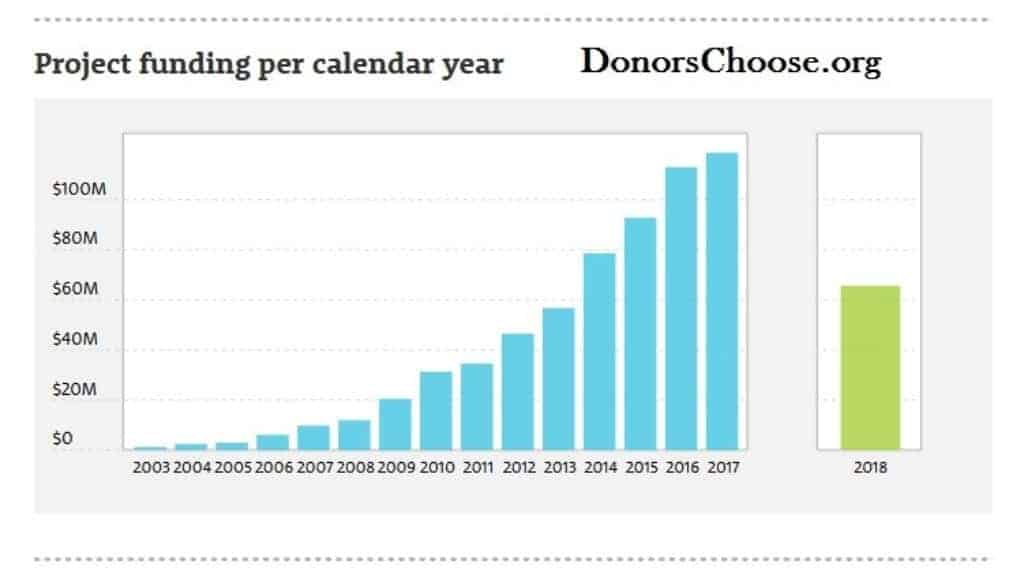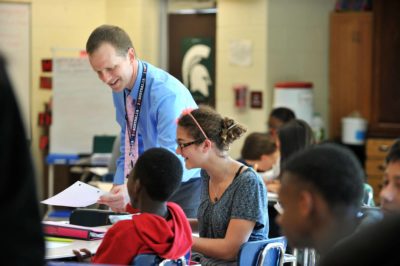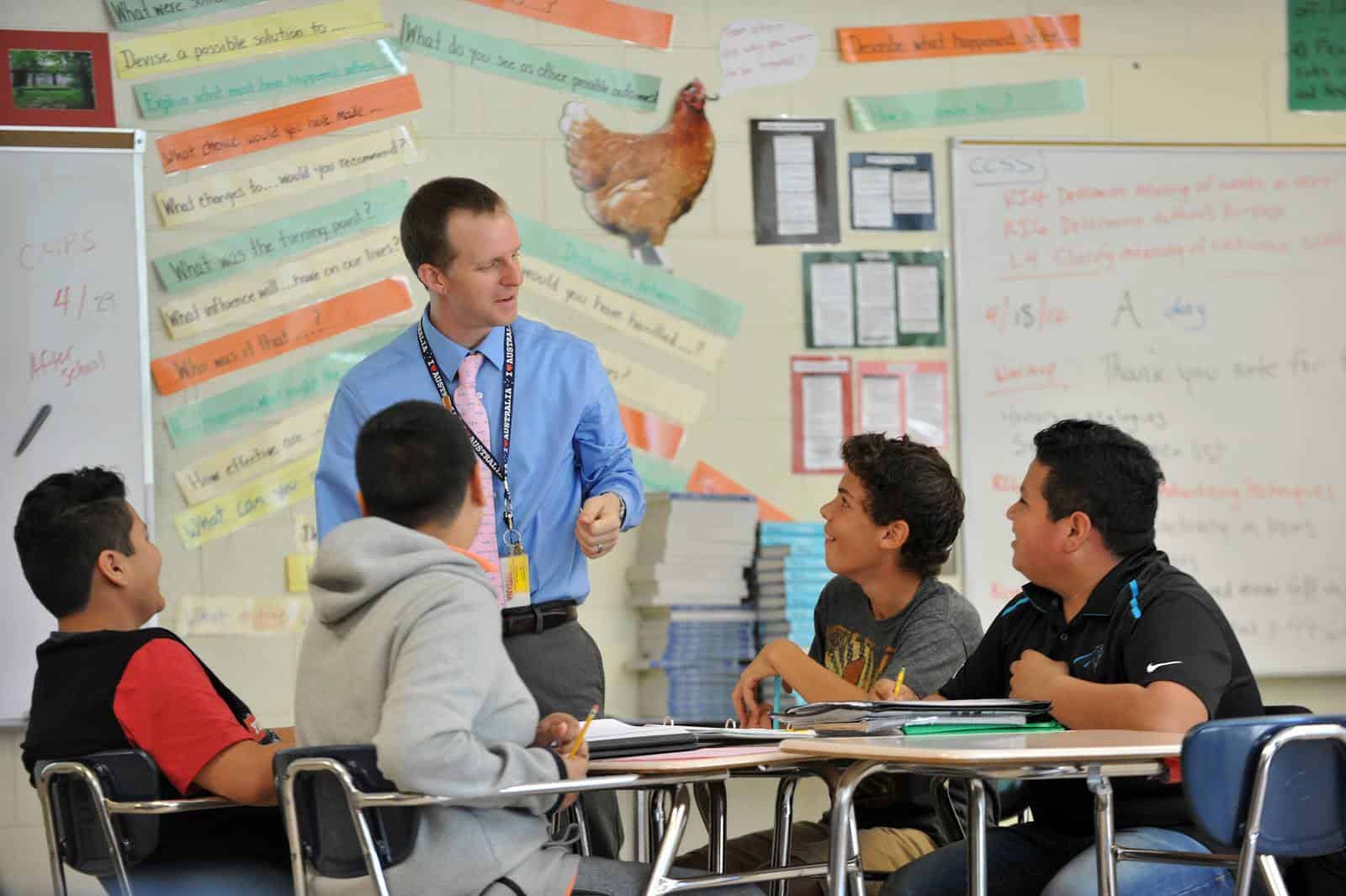Classes with so many children that some have to sit on the floor. Other classes taking place in closets. Blind students who can’t get books in Braille. History textbooks that have George Bush as president. Kindergarten classes with 30 students and no assistant. Teachers forced to stop class to attend to special medical needs because there is no nurse on duty.
Welcome to public school in North Carolina.
Thousands of teachers from all over the state who are fed up with these conditions have begun to connect with each other via social media. The connections have helped mitigate our feeling of isolation, develop a crucial sense of community and build collective strength. Just as importantly, they have allowed us to share information about the common challenges we face.
As the number of teachers pledging to take personal days to come to Raleigh for the 5/16 Rally for Respect passes 10,000, efforts by some to discredit the uprising by characterizing teachers as money grubbers have intensified. Detractors point to pay increases of the past few years, ignoring the fact that average pay for NC teachers is still 16% below the national average, just as it was in FY 10-11 before Republicans took control of the General Assembly. They say teachers should be grateful for what they have and not abandon their students. However, the fact is, it is not really about the paychecks.
Granted, North Carolina’s teachers would love to be able to quit their second and third jobs and spend more time with our families. We would love to see our principals compensated fairly instead of facing $20,000 pay cuts because of standardized test scores. But it is important for the public to remember that we didn’t get into education for the money. We teach because we love North Carolina’s children, and we want to see them succeed. Unfortunately, our General Assembly’s misplaced priorities not only create difficult working conditions for our teachers, they create unacceptable learning conditions for students that have lasting impacts on student behavior and achievement. Those misplaced priorities include lowering NC’s corporate tax rate to the lowest in the country and giving up $3.5 billion in potential revenue each year.
In case the ‘teachers are just in it for the money’ argument isn’t ludicrous enough on its face, allow me to explain some of the non-paycheck-related reasons teachers are coming to Raleigh on May 16.
Class sizes
Since school year 2008-09, North Carolina’s population has increased more than 10 percent. Over the same period, we have lost nearly 7,500 teacher assistants due to state budget cuts, and we now have fewer teachers per student. The enormous class sizes teachers face are crippling their ability to differentiate, manage behavior, and provide quality instruction to children. Take a look at these shocking numbers, shared in a teacher Facebook group, from around the state:
- 30 kindergarten students in a library class with no assistant (Mecklenburg)
- 31 high school students in Honors Chemistry. The teacher reports that ‘labs are terrifying.’ (Cabarrus)
- 37 fifth graders in a trailer (Winston-Salem/Forsyth)
- 37 8th grade math students in an Exceptional Children/Inclusion class (Cabarrus)
- 38 10th-12th graders in AP German class, no planning period (Guilford)
- 39 freshmen through seniors, Math 4 (Union)
- 40 high school students in a trailer for Math 3, Title 1 (Mecklenburg)
- 42 students in Math 2 (New Hanover)
- 43, 8th graders in healthful living. Only have 40 desks, when all are present, one sits at teacher’s desk, the other two sit on the floor (Wake)
- 44 students American History I (Onslow)
- 45 kids in physical science. The majority of them have taken the class before, class includes many students with learning disabilities and students classified as seriously emotionally disabled. (Mecklenburg)
In order for effective teaching and learning to take place, teachers must be able to build meaningful relationships with their students. Apart from the obvious stress on teachers and risks to student safety, our current class sizes make it extremely difficult for teachers to give students the individual attention they deserve. Reducing teacher/student ratios would improve our educational outcomes but would also require a major increase in education funding by state lawmakers. That’s one thing teachers will be demanding on May 16.
Student support services
After the Parkland, FL massacre, North Carolina legislators convened the House Select Committee on Safer Schools. The committee investigated support services’ role in student health. Unsurprisingly, they found current staffing ratios did not adequately provide for students’ social and emotional needs. Industry standards recommend ratios of 1:250 for school counselors. This school year, North Carolina’s students are supported by counselors at a ratio of 1:350. It is recommended that social workers be provided at a ratio of 1:400. Our ratio is 1:1427. The suggested ratio of psychologists per student is 1:700. This year our ratio is 1:1857. Nurses should be available at a ratio of 1:750, but we are currently at 1:2315—with many schools forced to have parent volunteers staff the nurse’s office rather than leave it empty.
One teacher has a student with special medical needs. Because the school’s nurse is only on campus three days a week, the teacher has been trained to attend to those needs. She is concerned about liability and having to stop instruction on a regular basis, but she has no other alternative–the child needs help he can’t get elsewhere.
Teachers in Raleigh on May 16 will be demanding the General Assembly act on the House committee’s recommendation to increase the number of support services personnel. Our students’ academic success hinges on their social and emotional health, as does their safety. It is time for us to stop cutting corners and do the right thing.
School supplies/textbooks
Since 2008-09, the General Assembly has cut allotments for textbooks by 38 percent, technology by 45 percent, and school supplies by 54 percent (numbers are per student and adjusted for inflation). Teachers are stuck teaching classes with outdated textbooks (or no textbooks), spending their own money on books, paper, and other supplies for their students, and begging parents and community members to make up the difference for what state lawmakers don’t provide. The number of projects funded by Donors Choose has skyrocketed in the past few years.

Consider these examples of how cutbacks have affected our students’ educational experience:
- A history teacher in Guilford County has a textbook with Bush as president. Obama appears in the book once—as a senator. Her school rebinds books regularly because it is cheaper than purchasing new ones. The same outdated textbook is in use in many other districts as well.
- A biology teacher in Iredell-Statesville has no biology textbooks and has to create all of her own materials to teach the class. Her earth science textbooks are the same edition from when she was a high school student 14 years ago. They are moldy and falling apart.
- A teacher in Union County has 39 students in her 8th grade AIG English 1 class. She has 10 copies of one of the required textbooks. This forces the students to do all work in that book either in shifts or as a group. She has just one copy of another required textbook. The only way to meet county requirements would be to make photocopies, which is illegal.
- A district literacy specialist in Durham has had zero dollars for the past seven years to purchase books. She and her colleagues are reduced to asking for donations so their students will be able to read.
- A teacher in an unnamed county has a student who is blind. Braille books cost $50 each, and the school receives a maximum of $300 per year to support this student. Since they don’t have the money to buy the books this student wants to read, they have been forced to purchase a Brailler so they can make their own books.
The difficulties noted are shocking, but they are not unusual. They represent the reality of what thousands of North Carolina students and teachers face every single day in our schools.
Our students are the future of North Carolina. They deserve to be provided with textbooks and novels. They deserve access to support services to ensure they are socially and emotionally healthy. They deserve class sizes that will enable them to get the attention they need to be successful. In order to provide those conditions, our General Assembly must make education priority number one in our state. On May 16, thousands of teachers from all over North Carolina will be descending upon Raleigh to demand that state lawmakers do just that. We won’t be abandoning our students that day, we’ll be making a collective sacrifice to stand up for them.
Recommended reading




